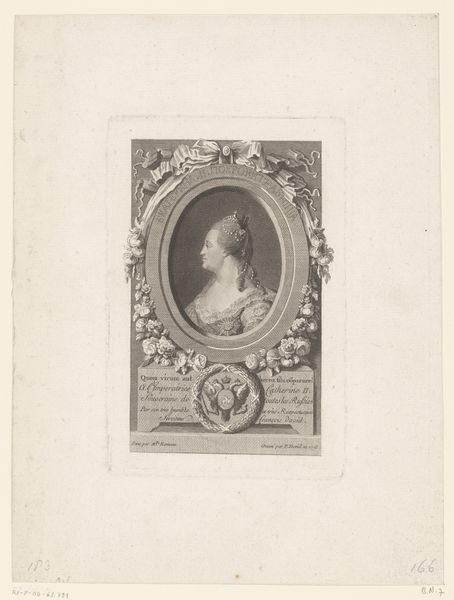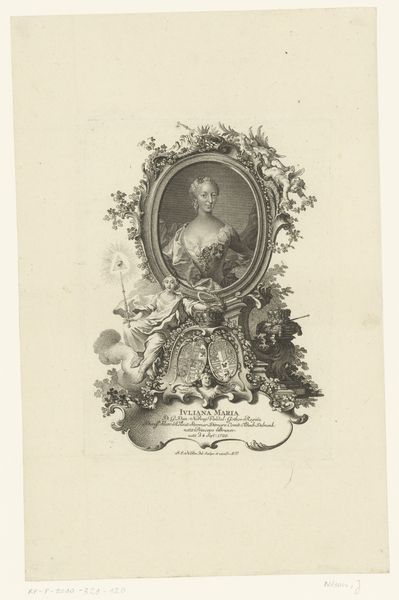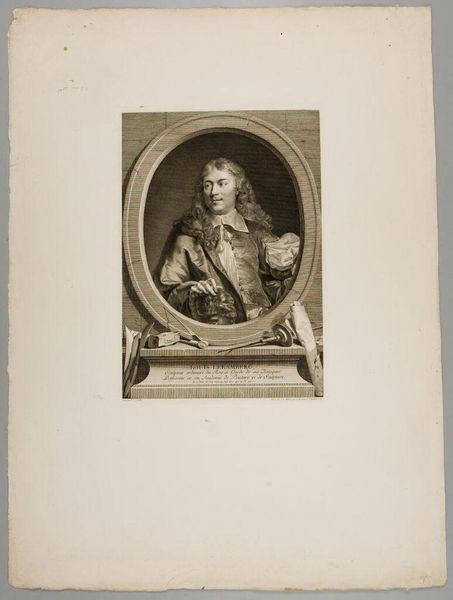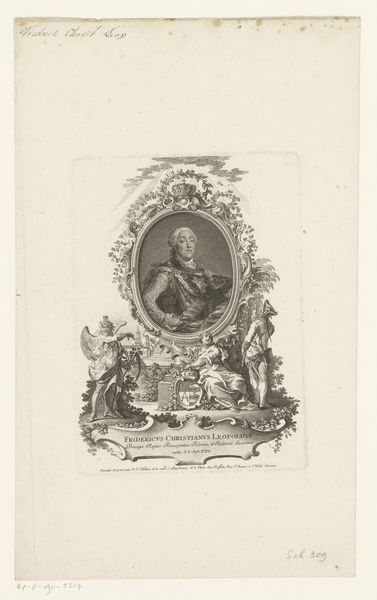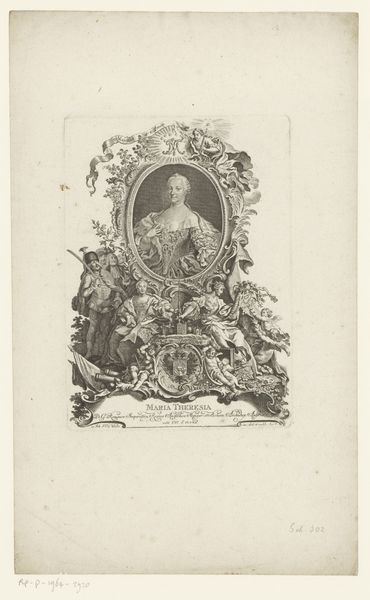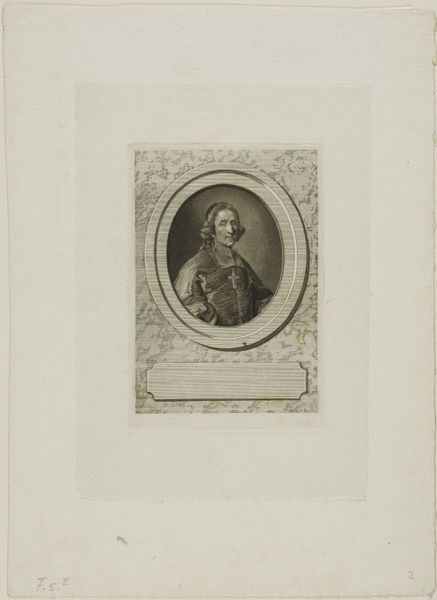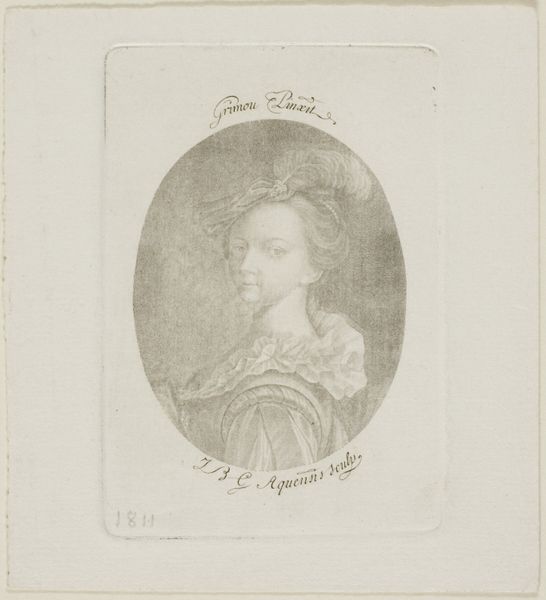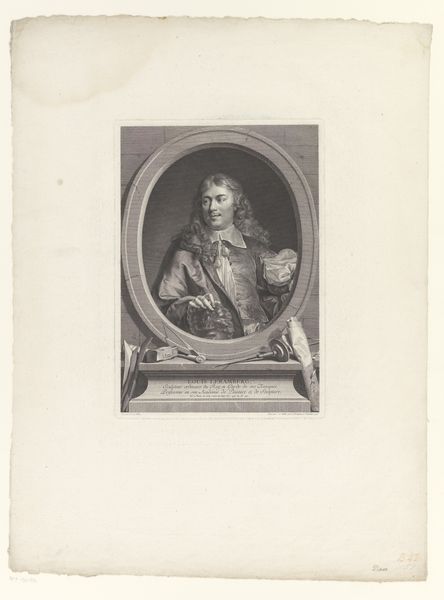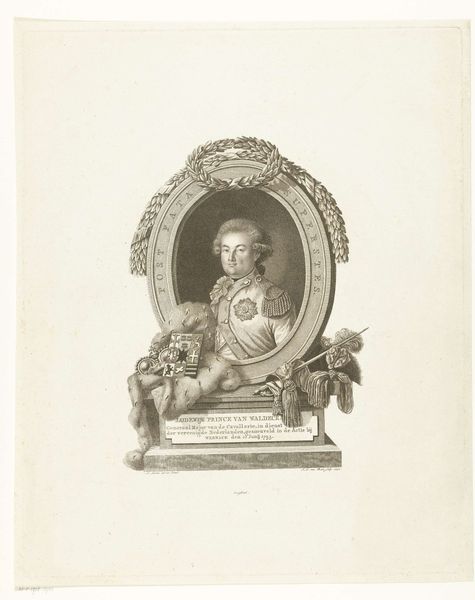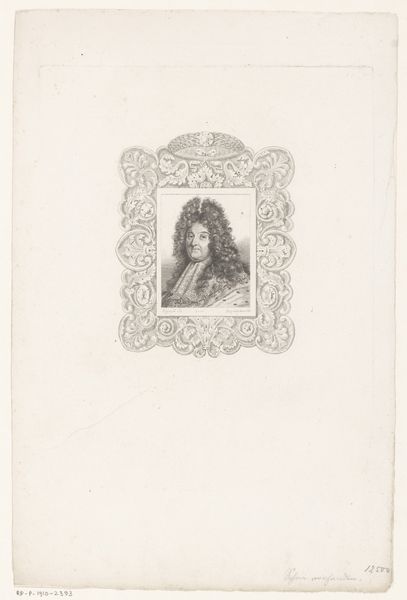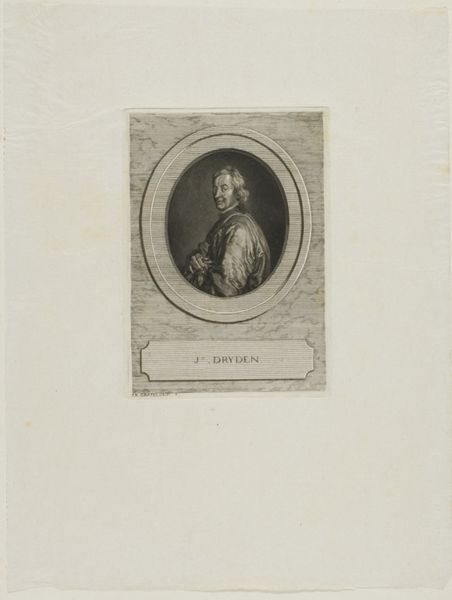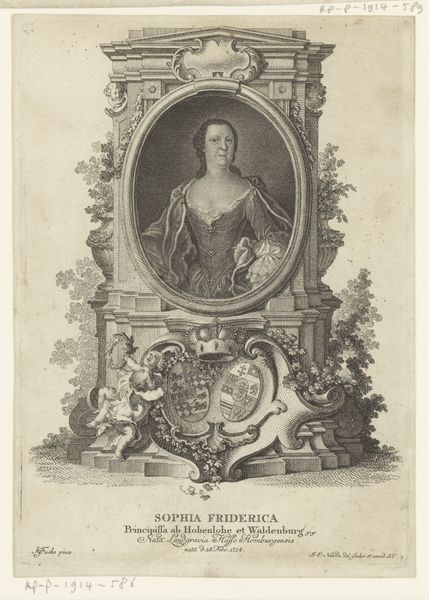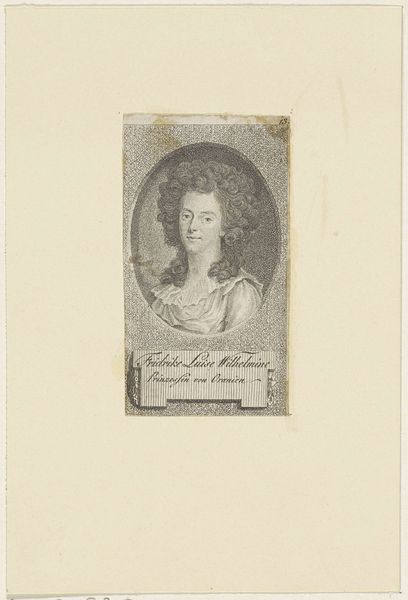
Dimensions: height 339 mm, width 235 mm
Copyright: Rijks Museum: Open Domain
Curator: Here we have a 19th-century print titled "Portret van Louise Henriëtte, prinses van Oranje," housed right here at the Rijksmuseum. It's a fascinating example of baroque portraiture rendered through etching and engraving. Editor: It has such a wistful presence. The oval composition and the ornately decorated frame seem to intensify her slightly melancholic gaze. Curator: Exactly. The artist, an anonymous master of line and form, truly understood the baroque aesthetic. Look at how the intricate frame echoes the patterns in her hair and the delicate lace at her collar, creating a visual rhythm that leads the eye directly to her face. It is more than just an image but a set of compositional parts. Editor: While the composition pulls you in, I'm most interested in the choice of printmaking. Etching and engraving— labor-intensive methods to reproduce an image of power. Who was commissioning these prints and who was the end user? I want to understand its role in society and the means to making this accessible. Curator: Your question illuminates the socio-cultural dynamics surrounding art consumption. But consider how the engraver has utilized these techniques, modulating the lines to build tonal contrasts. Editor: It highlights an interesting tension, right? A hand-crafted reproductive method attempting to disseminate power widely, engaging workshops of craftspeople. You’ve also made me consider how her social standing is emphasized with such ornate presentation. Curator: The framing serves a specific rhetorical purpose within this constructed portrayal of royalty. By controlling this formal language, her perceived societal place is further cemented. Editor: Thank you; that is indeed something that needs further investigating. This journey through both its materials and formal properties, it is as though the artwork holds many mysteries yet to discover. Curator: An intricate image whose elegance is matched only by the myriad interpretations and historical circumstances that contributed to its very existence.
Comments
No comments
Be the first to comment and join the conversation on the ultimate creative platform.
